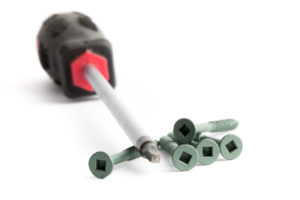Read the Following Selection
Read the following selection, or click on the play button below to listen aloud.
Cool Canadian Inventions
Canada is a country of amazing inventors. Here are just a few of the many incredible devices, sports, tools, and more that have been invented here!
Getting Around

Picture of a snowmobile
Thousands of years ago, Indigenous peoples invented canoes, toboggans, and snowshoes. Inuit inventors even created sunglasses to make it easier to see when snow reflects bright sunshine. In 1922, Joseph-Armand Bombardier of Quebec invented the snowmobile to make it easier to get around in winter in Canada’s north.

Painted lines on a road
In 1930, John D. Millar of Ontario had the idea of painting lines on the road to make driving safer. By 1933, this invention had spread across North America.
Some Canadian inventions have headed into space. The anti-gravity suit keeps astronauts—and pilots—safe while flying. The Canadarm, first used in 1981, repairs and positions satellites for the astronauts on the International Space Station.
Having Fun

Basketball game
Canadians like to have fun. Did you know that the Jolly Jumper for babies, the tabletop hockey game, and IMAX films were all invented in Canada?
Canadian James Naismith invented basketball in 1891, the first five-pin bowling game was played in Toronto in 1908, and Canadian swimmer Peg Seller created synchronized swimming in 1924.
Getting Things Done

Square-headed screwdriver
Canadian inventor Peter L. Robertson was tired of screwdrivers that slipped out of the screws. So he invented a square-headed screwdriver and screws with a square socket on them. Workers around the world loved it, and his invention became known as the Robertson screwdriver.
Norman Breakey of Toronto invented the paint roller in 1940 to speed up painting jobs. Cleanup became easier in the 1950s when Canadians Harry Wasylyk and Larry Hanson invented the green garbage bag.

Electron microscope
In 1937, scientists at the University of Toronto built the first electron microscope. It allowed people to see viruses and other tiny things that had been invisible to the human eye until then.
To keep people healthy, John Hopps of Toronto invented the pacemaker in 1950. This device sends pulses of electricity to a person’s heart to make it beat regularly. Dr. Tofy Mussivand of Ottawa created the world’s first artificial human heart in the 1990s for people with damaged hearts.
Now, show what you know!
Complete some questions about the reading selection by clicking “Begin Questions” below.









